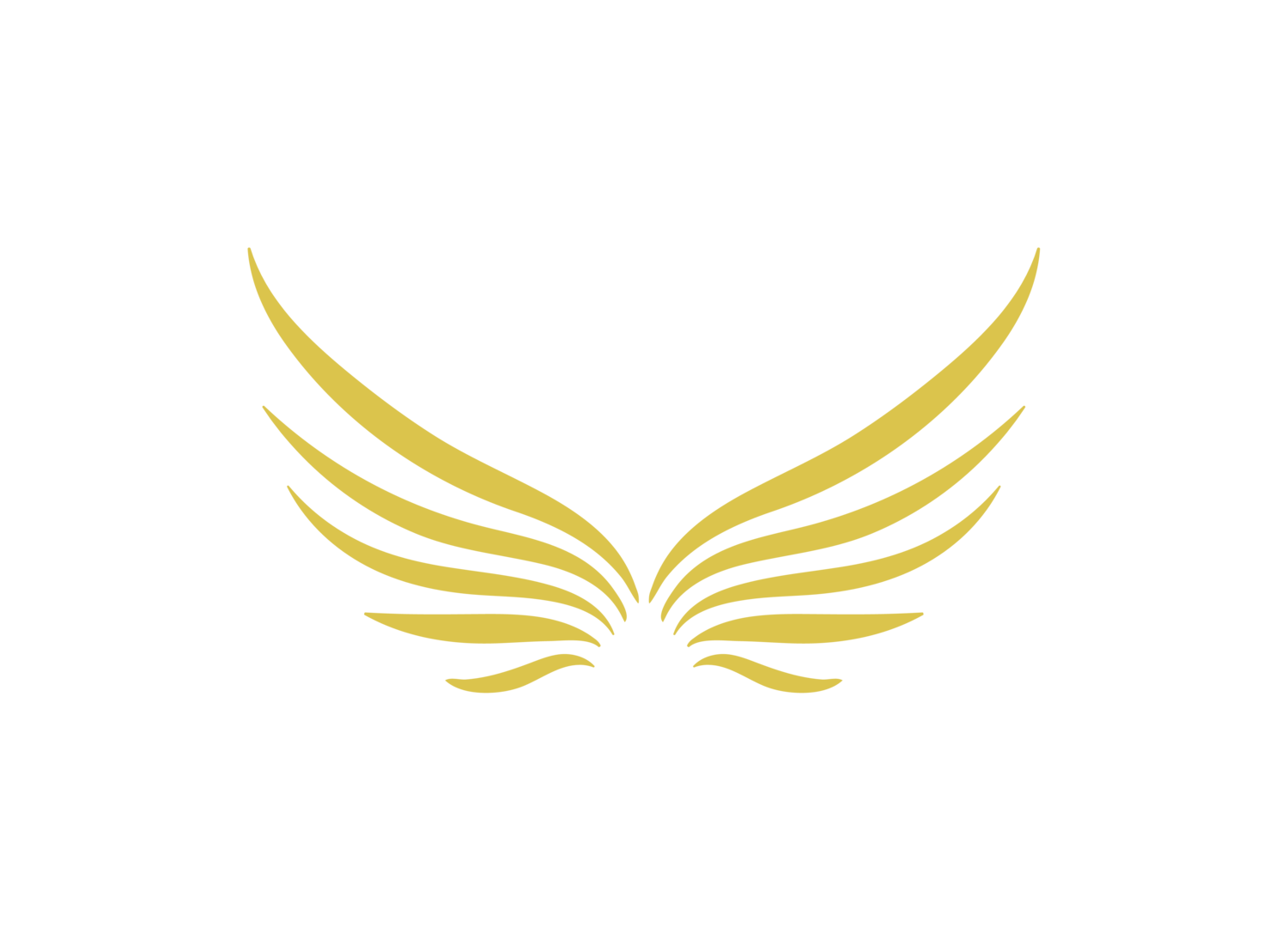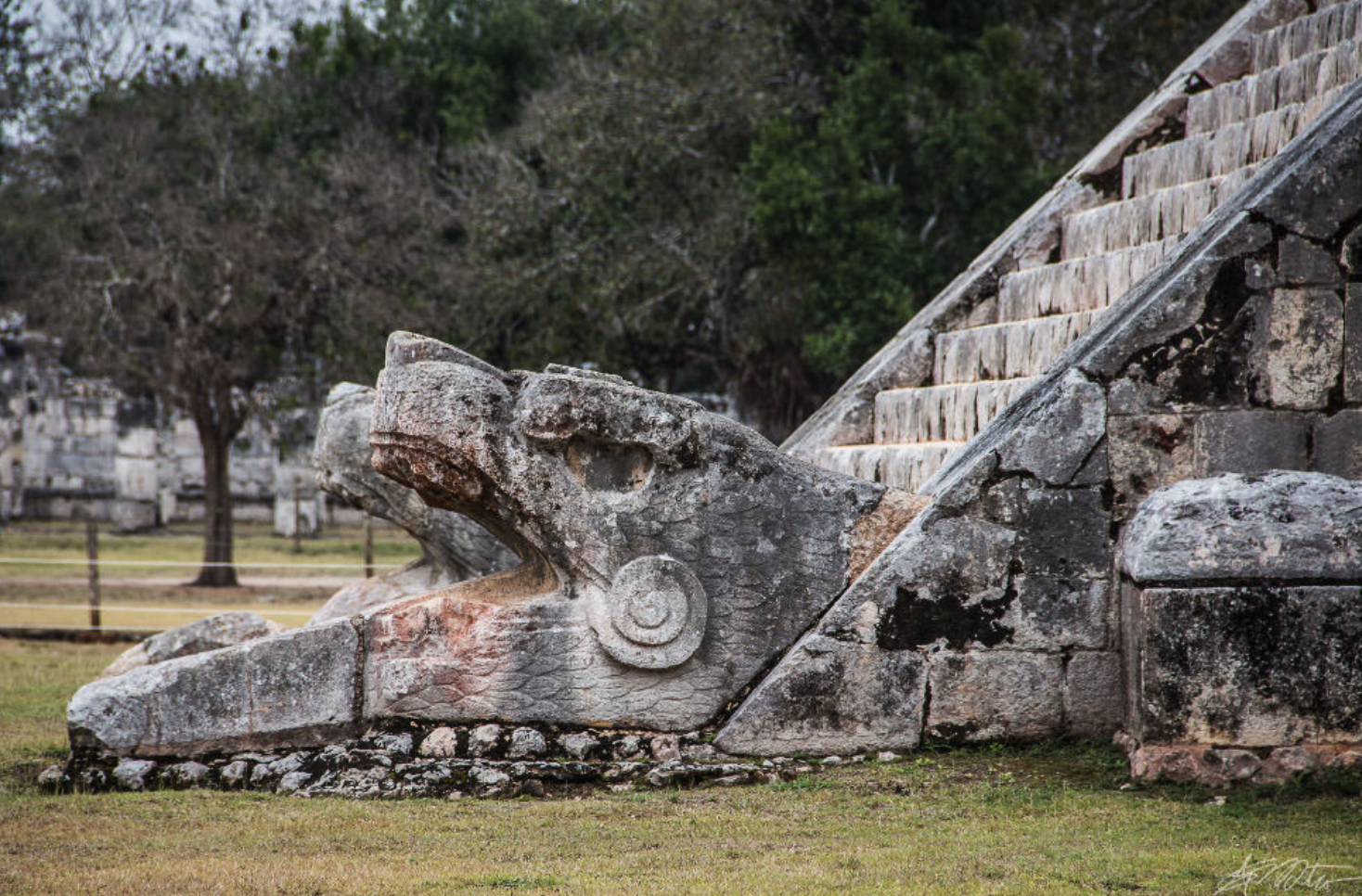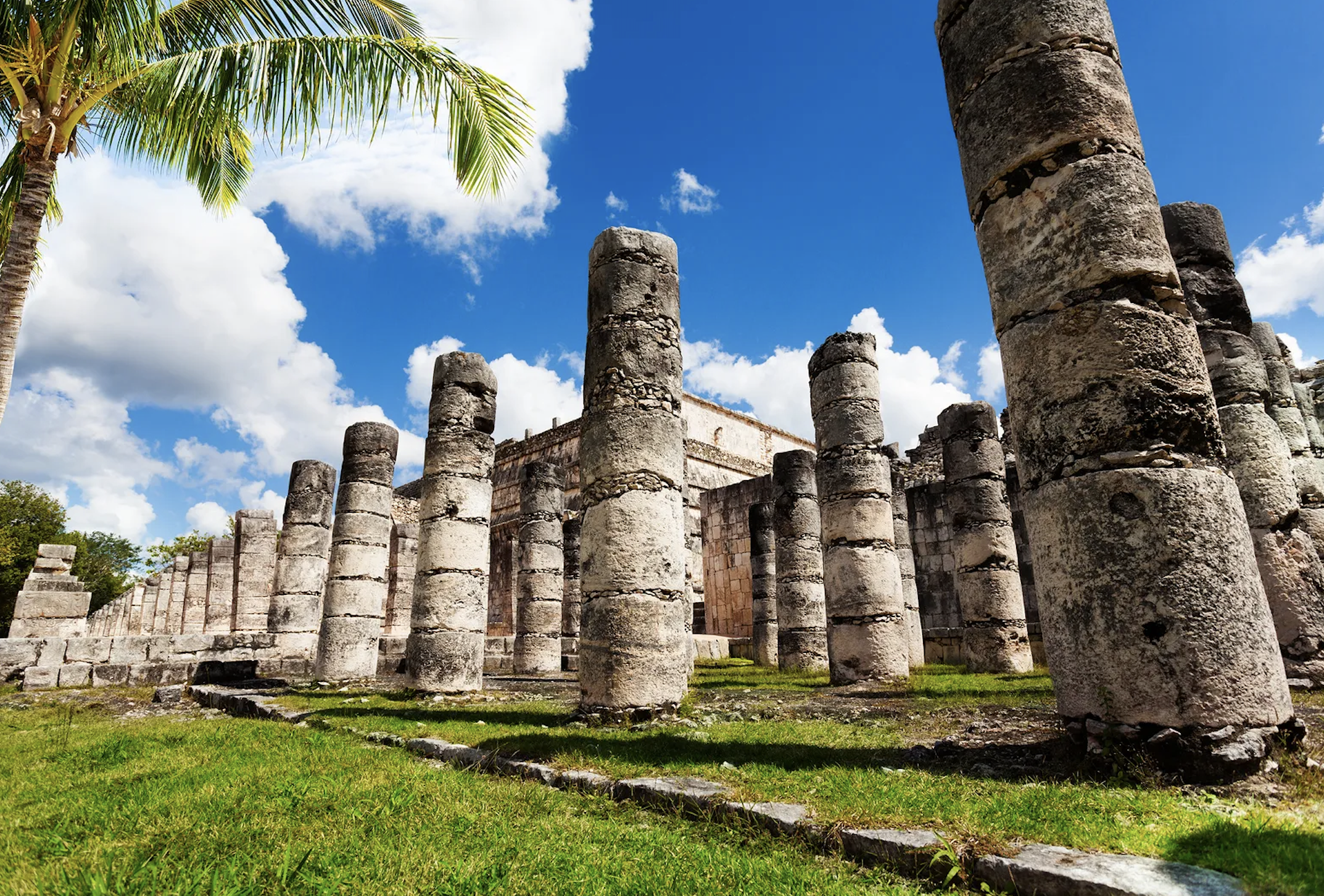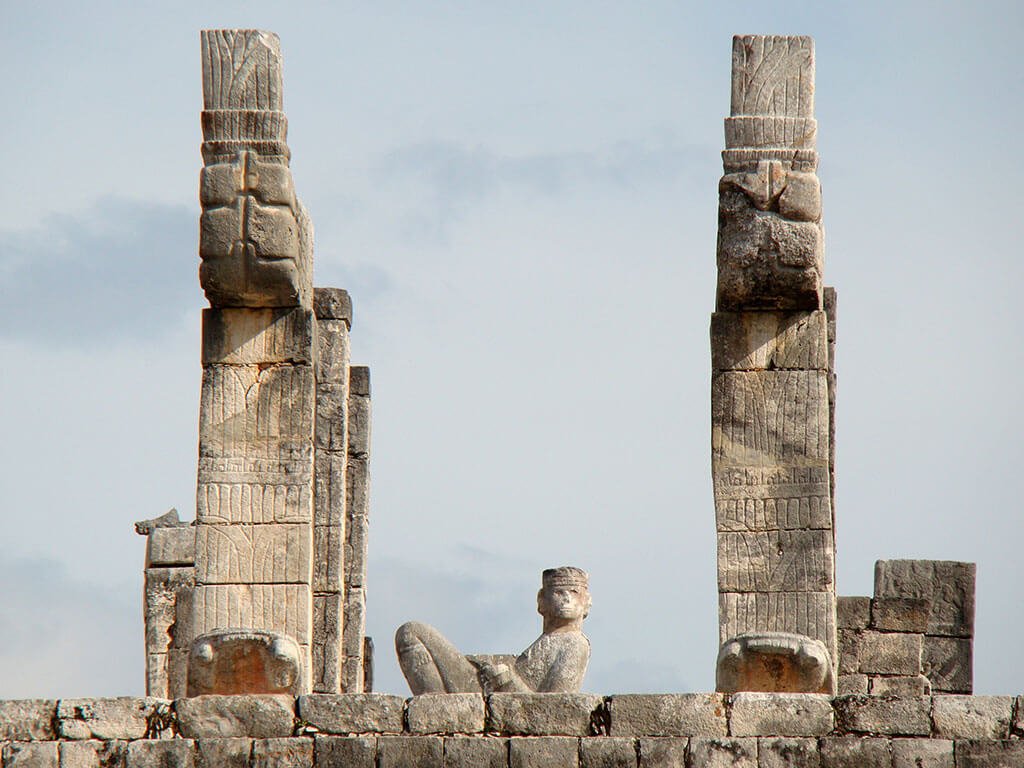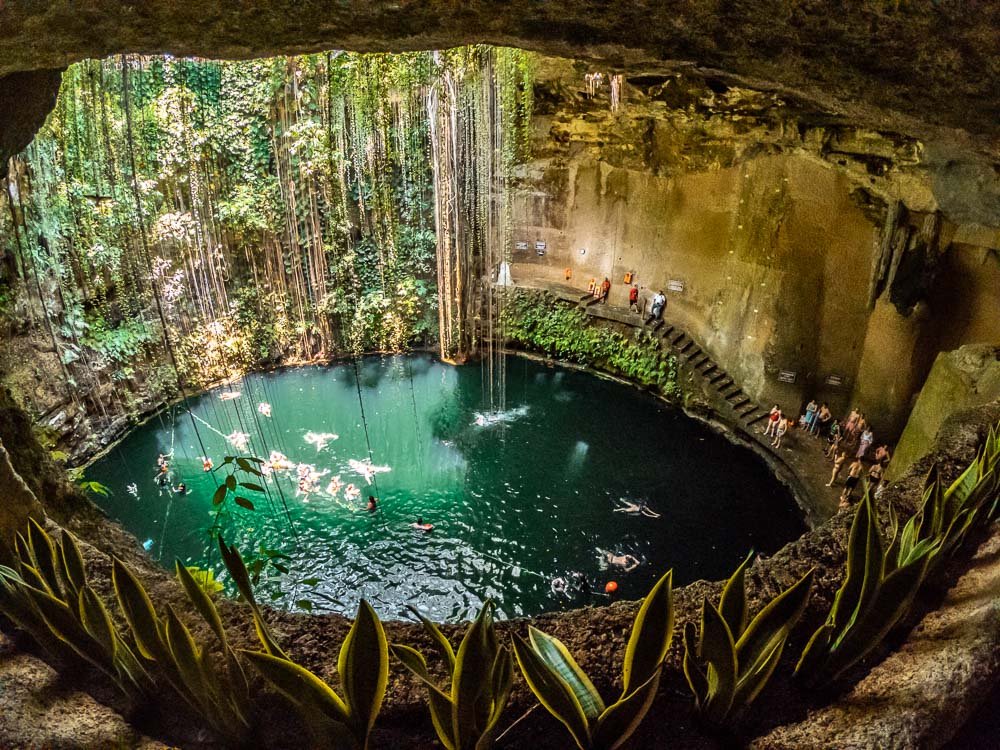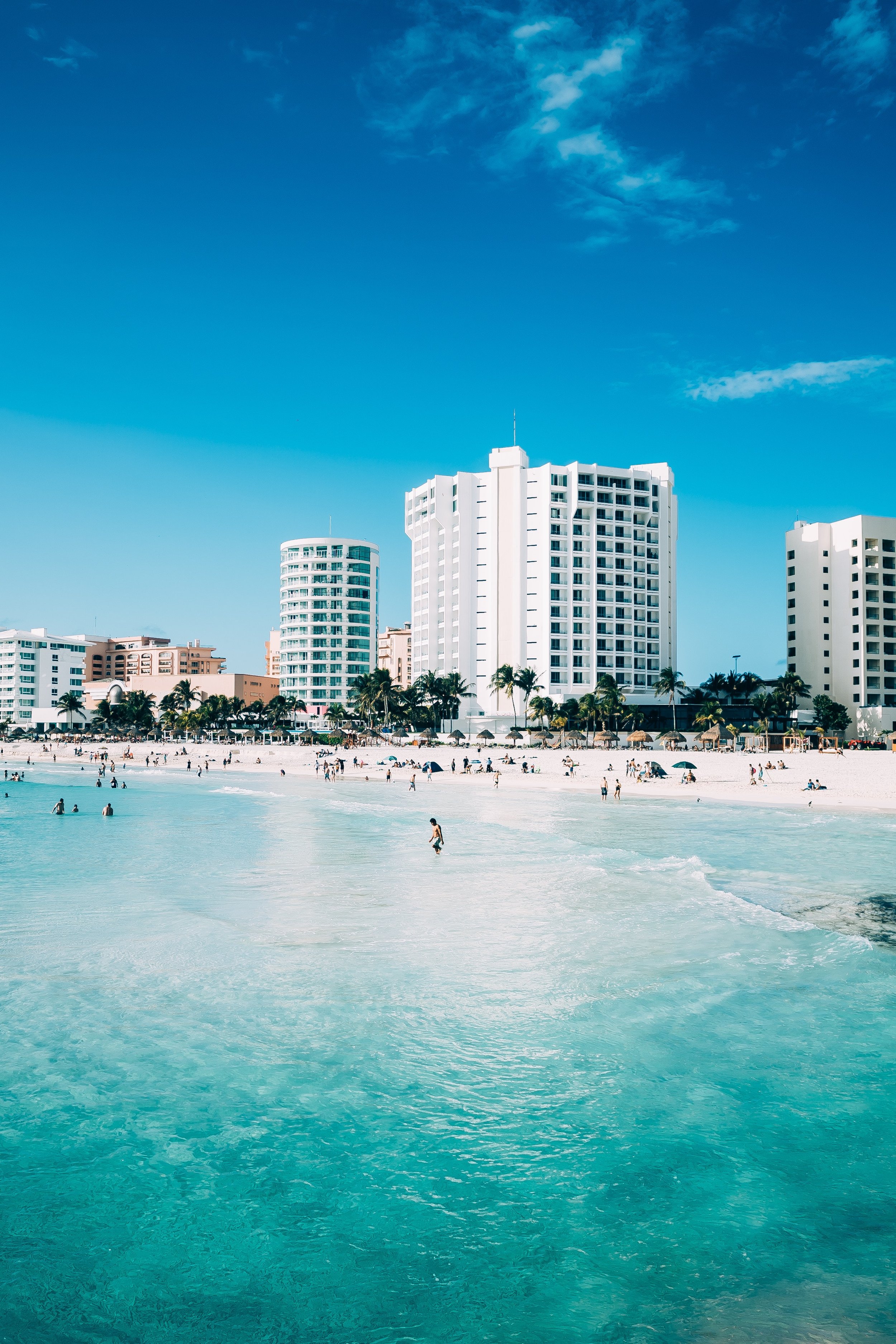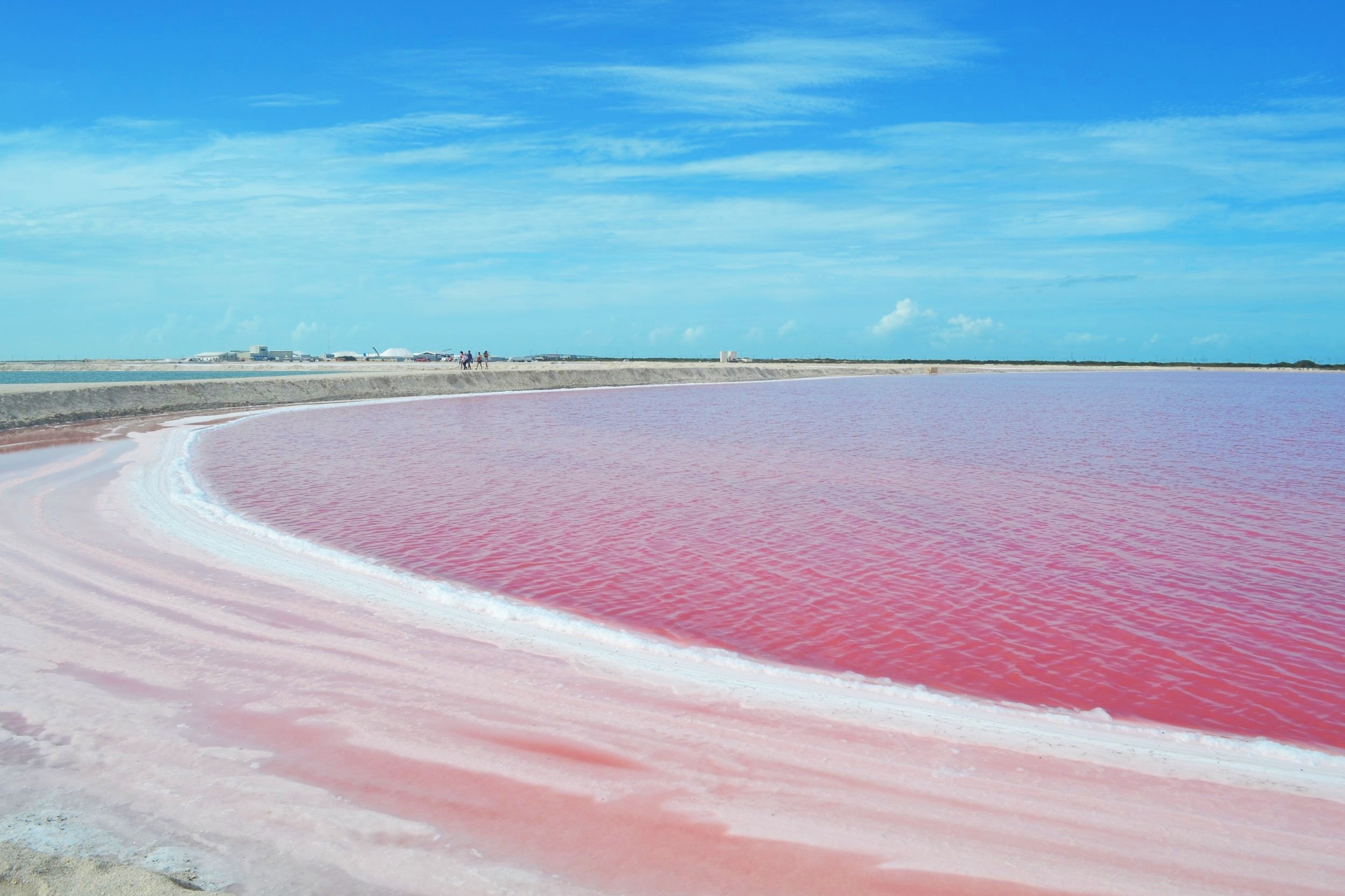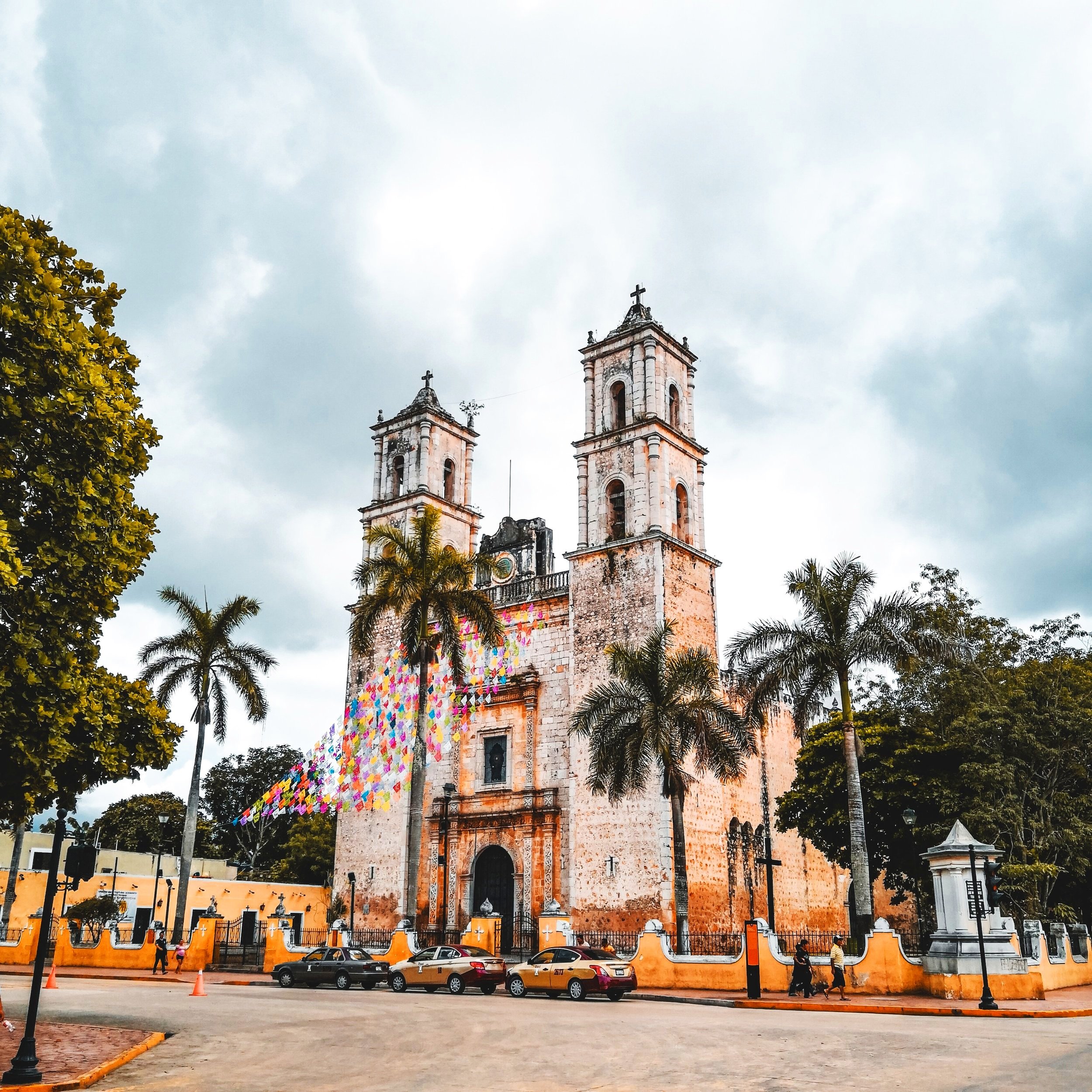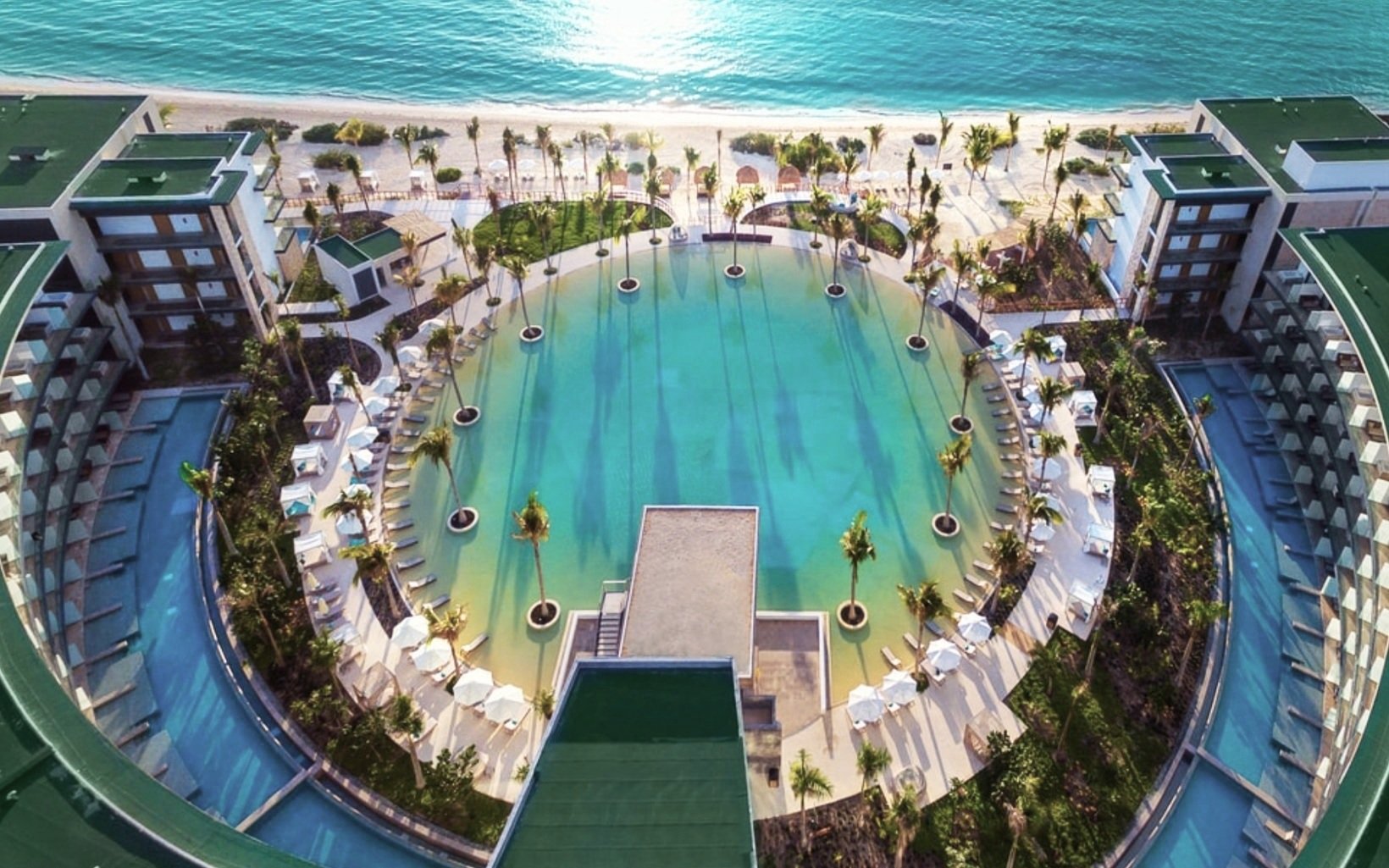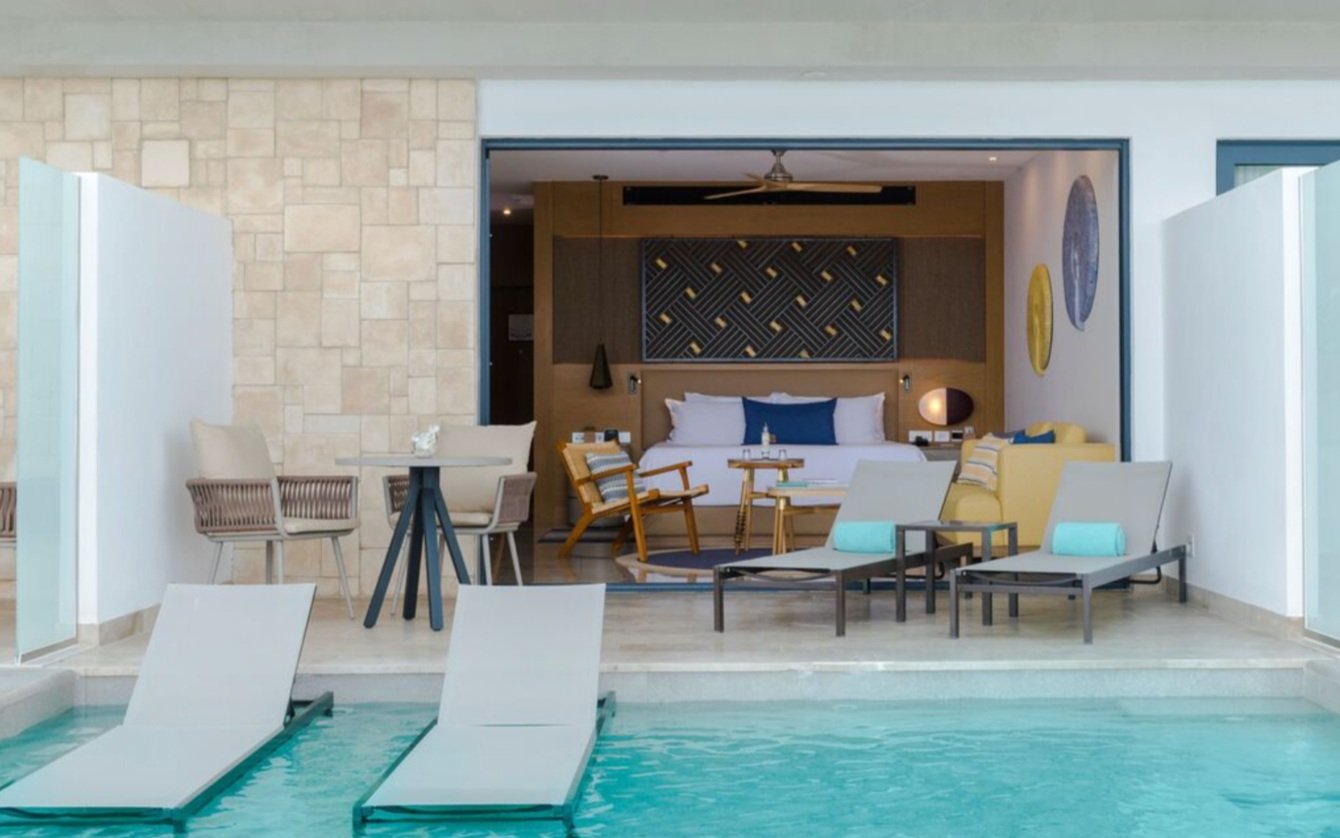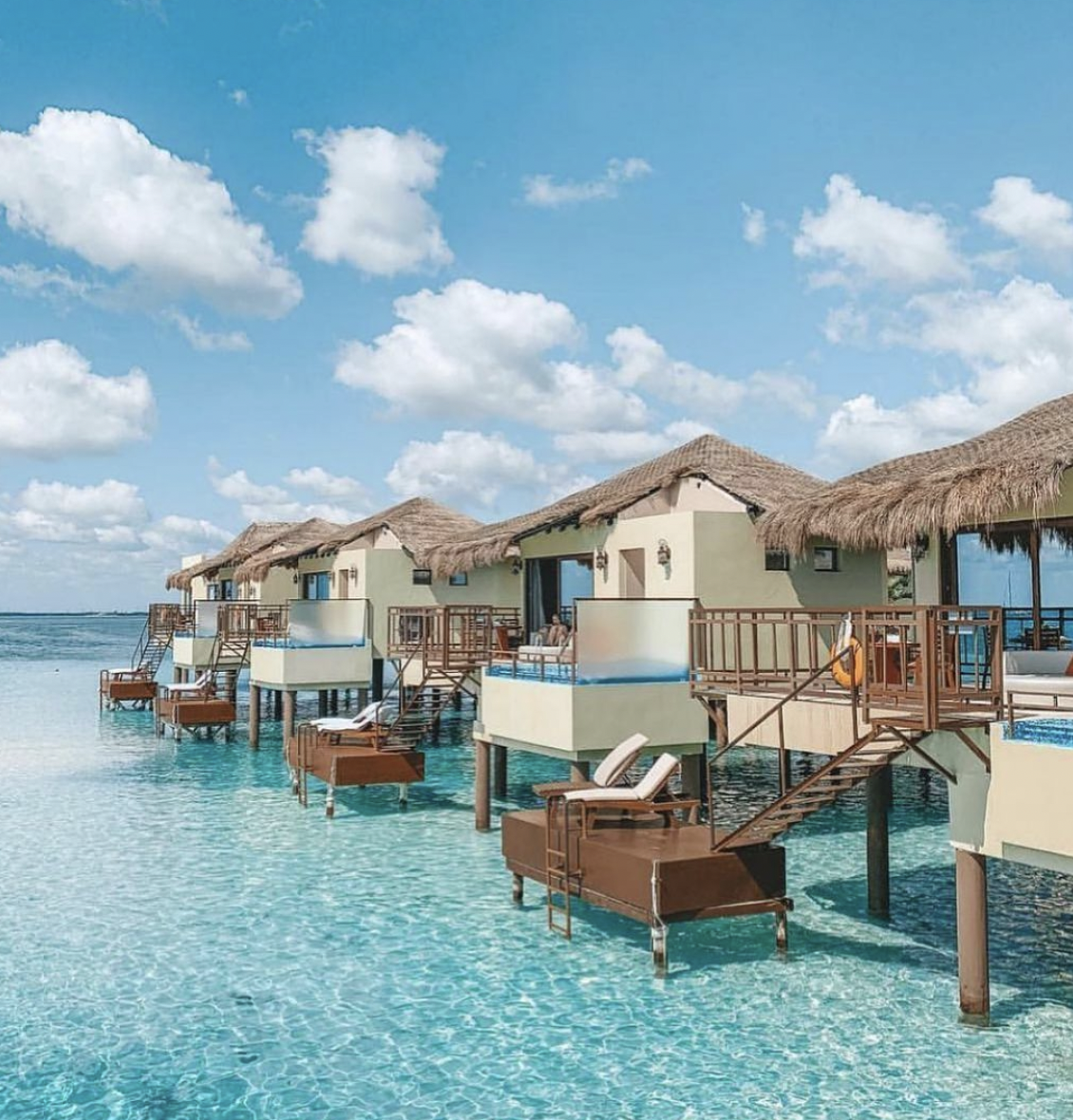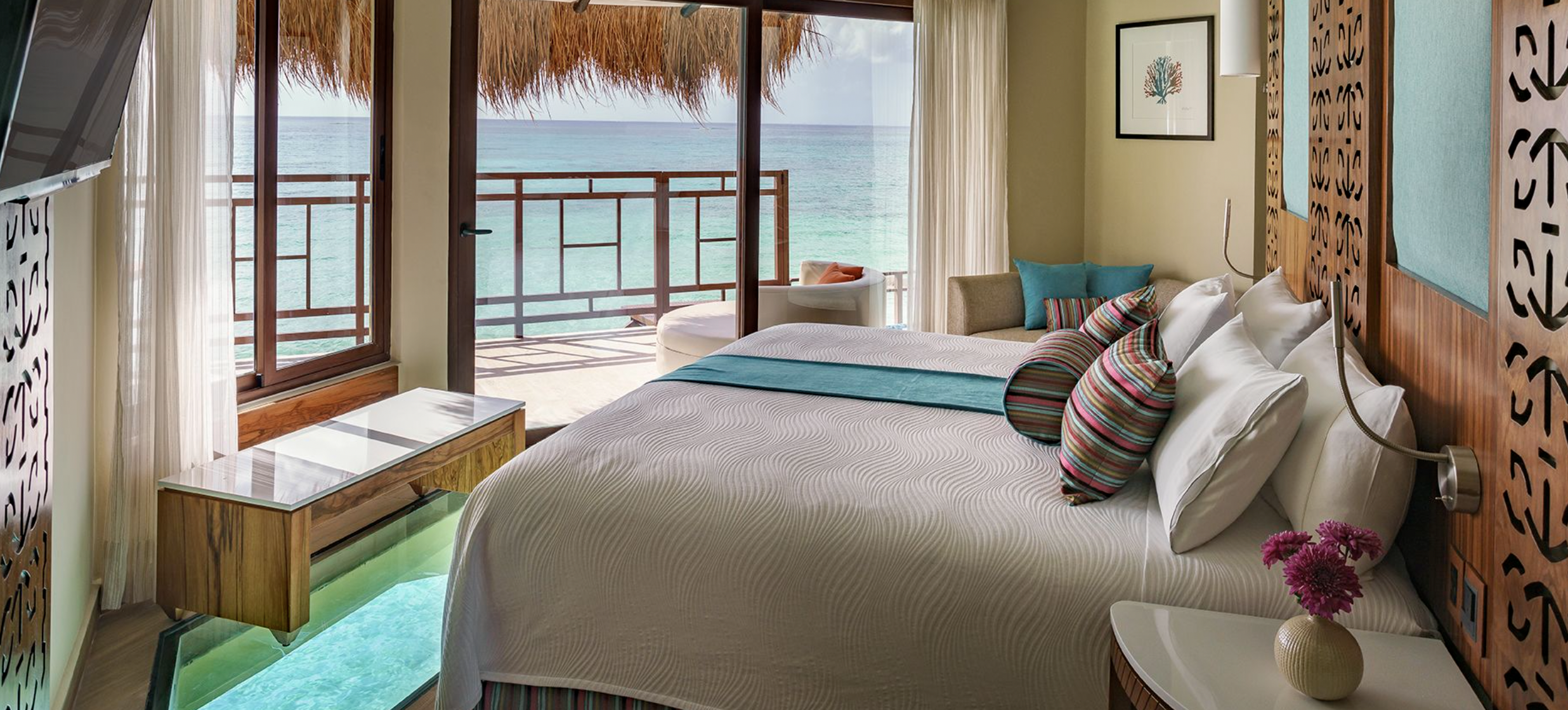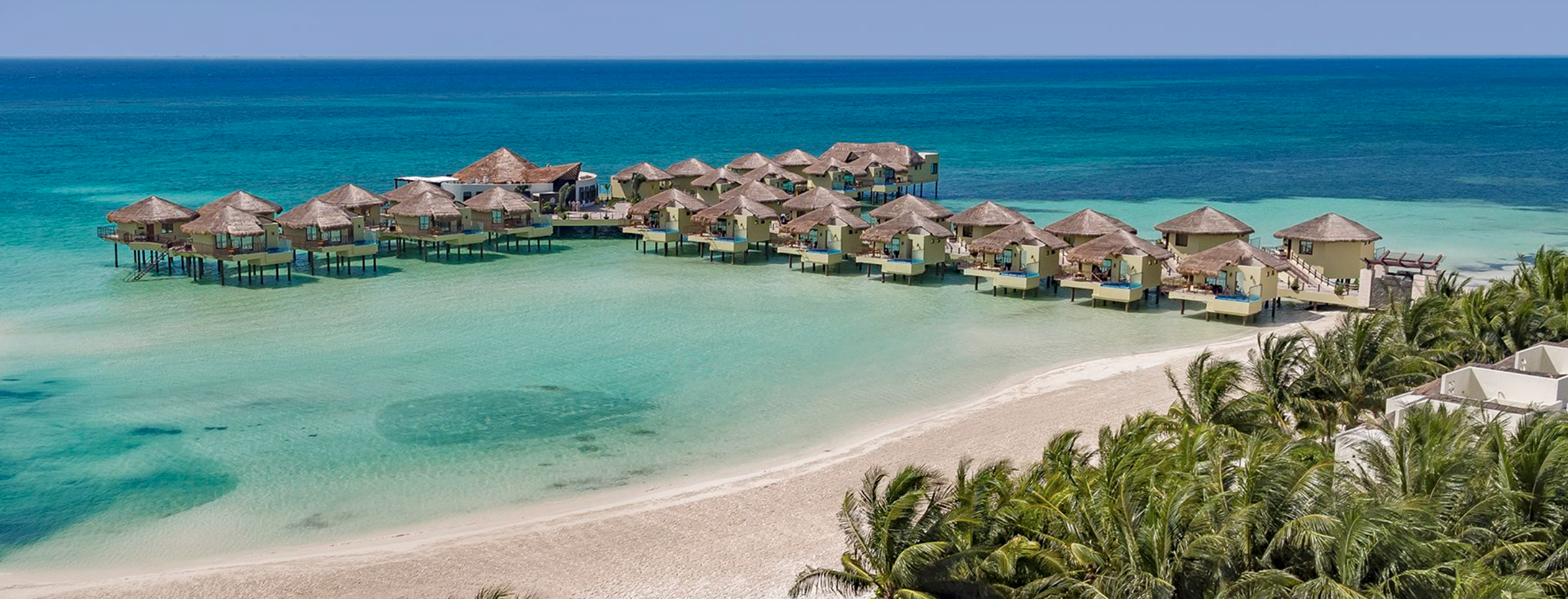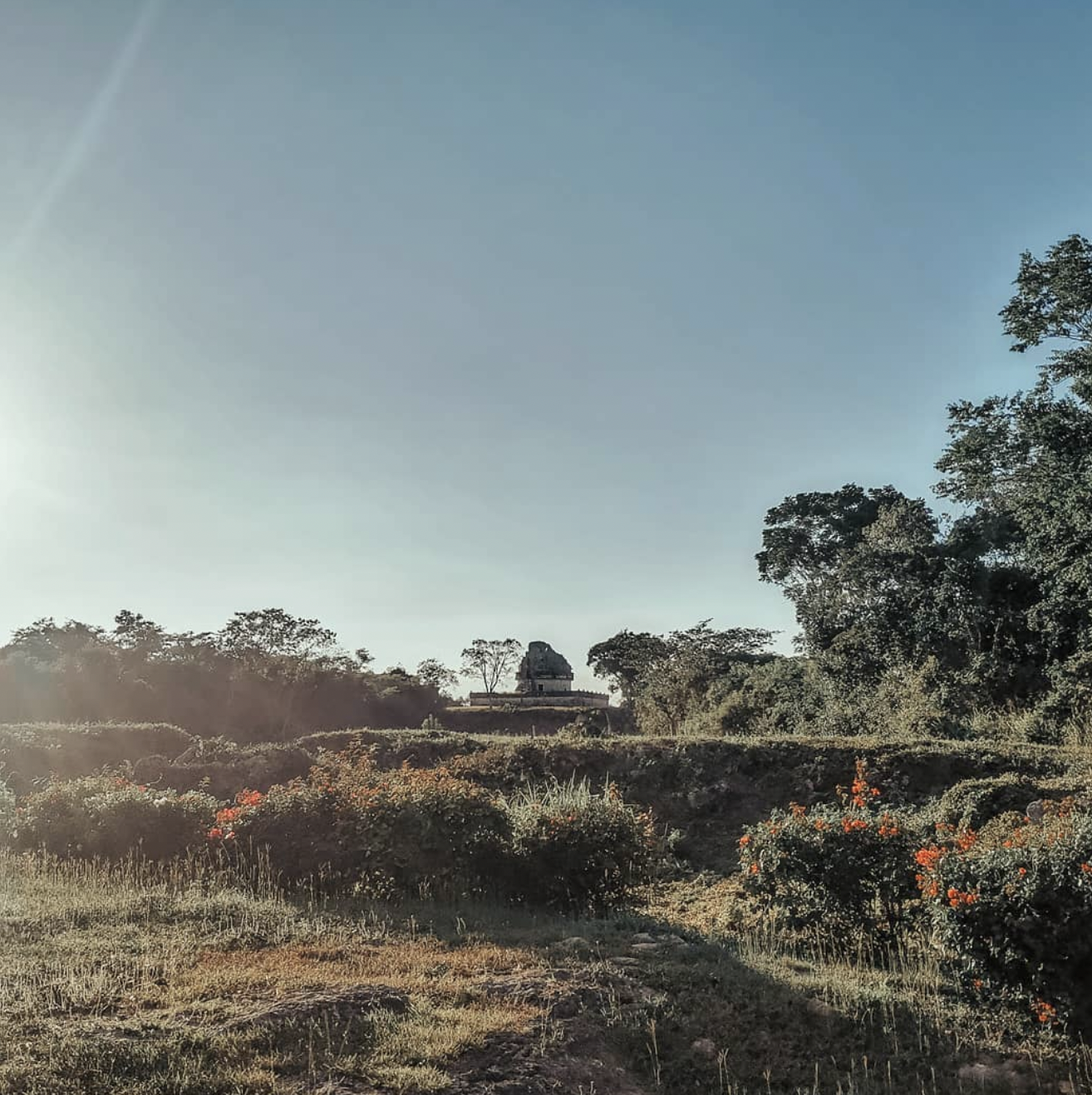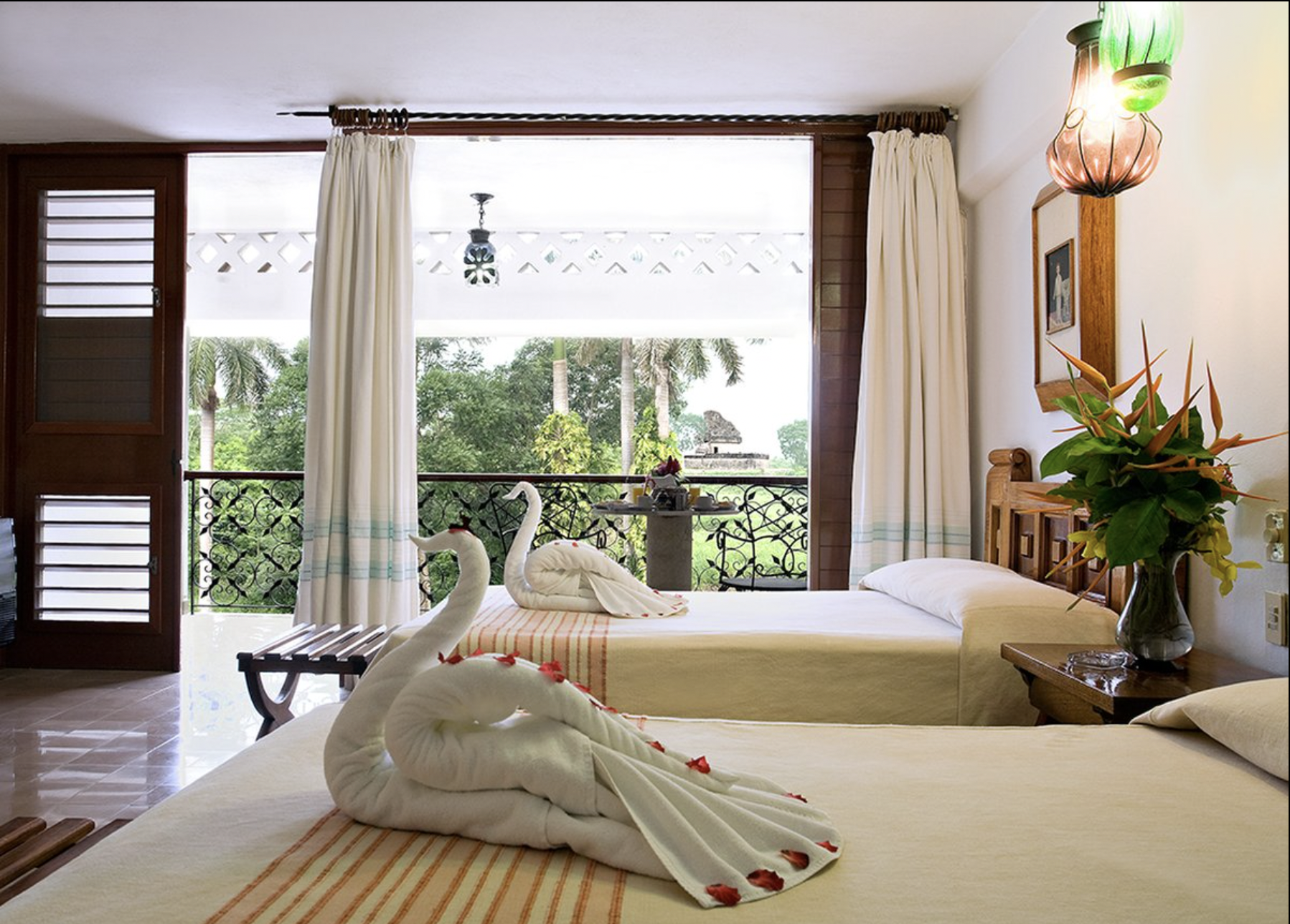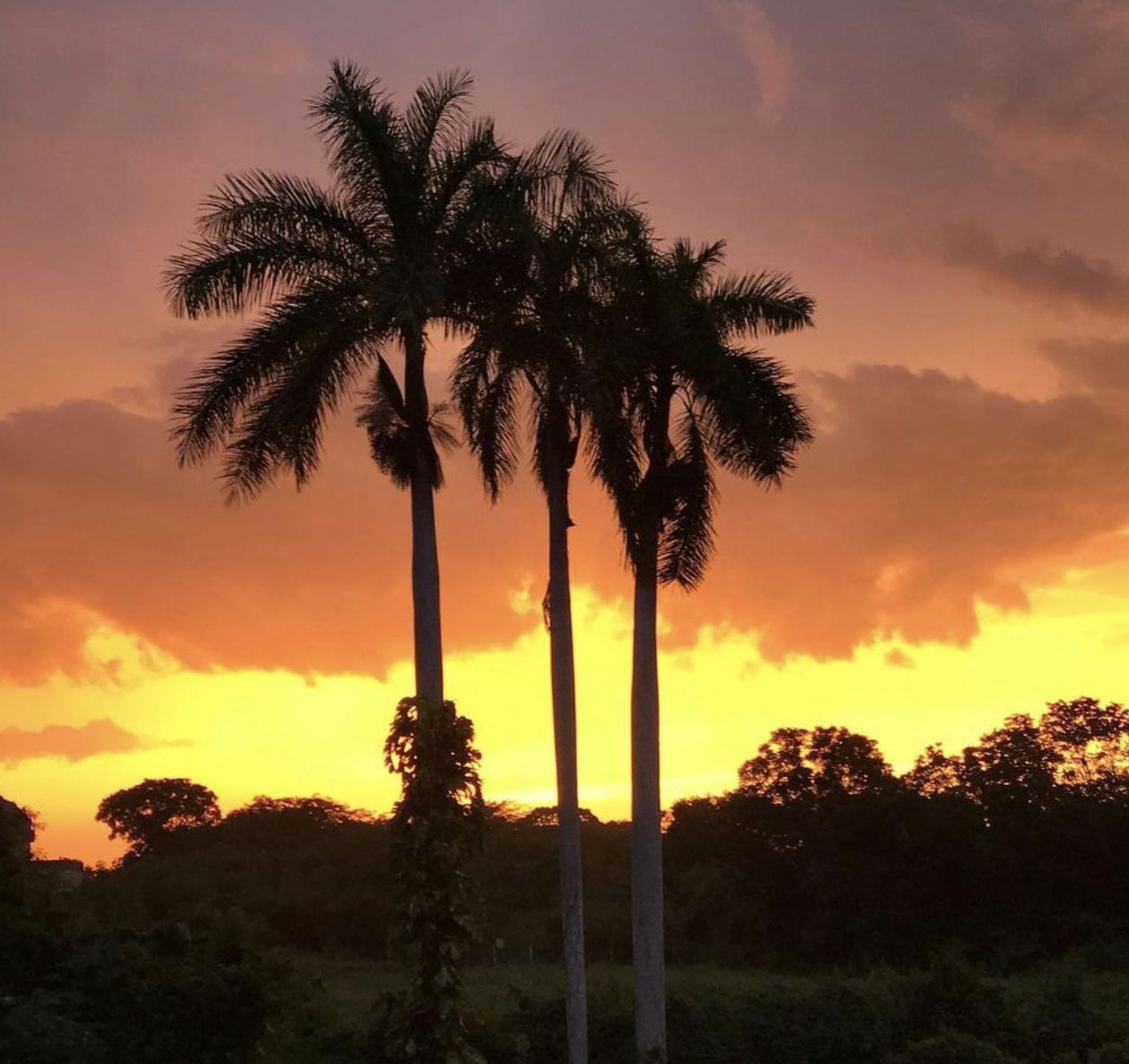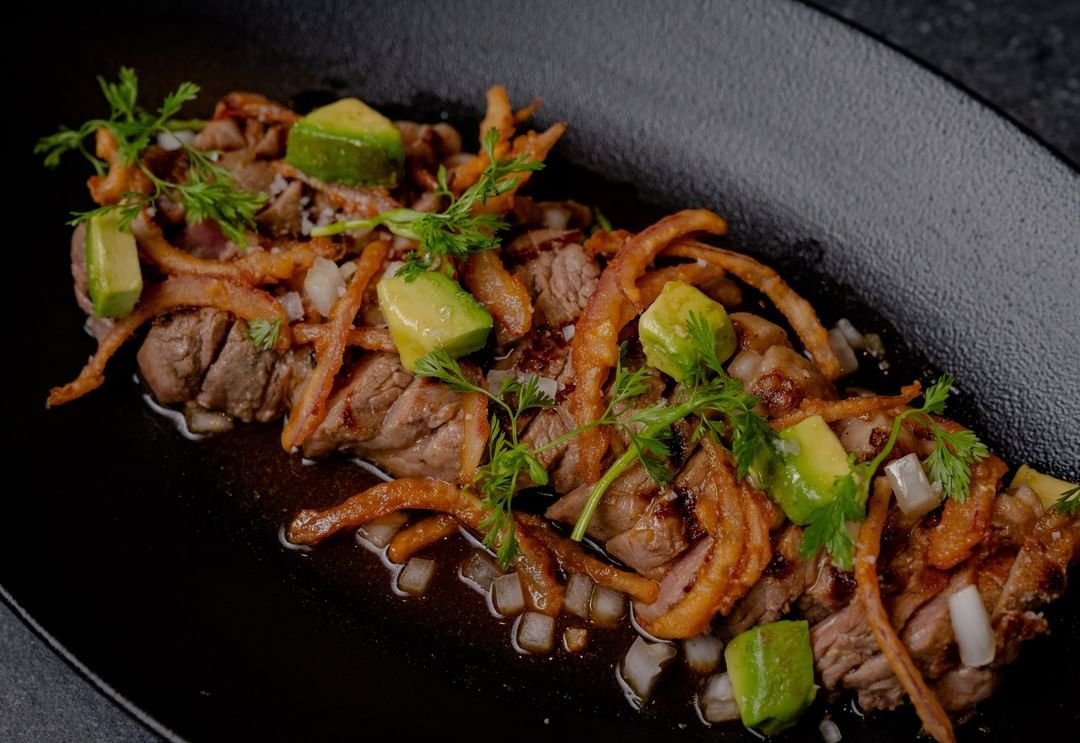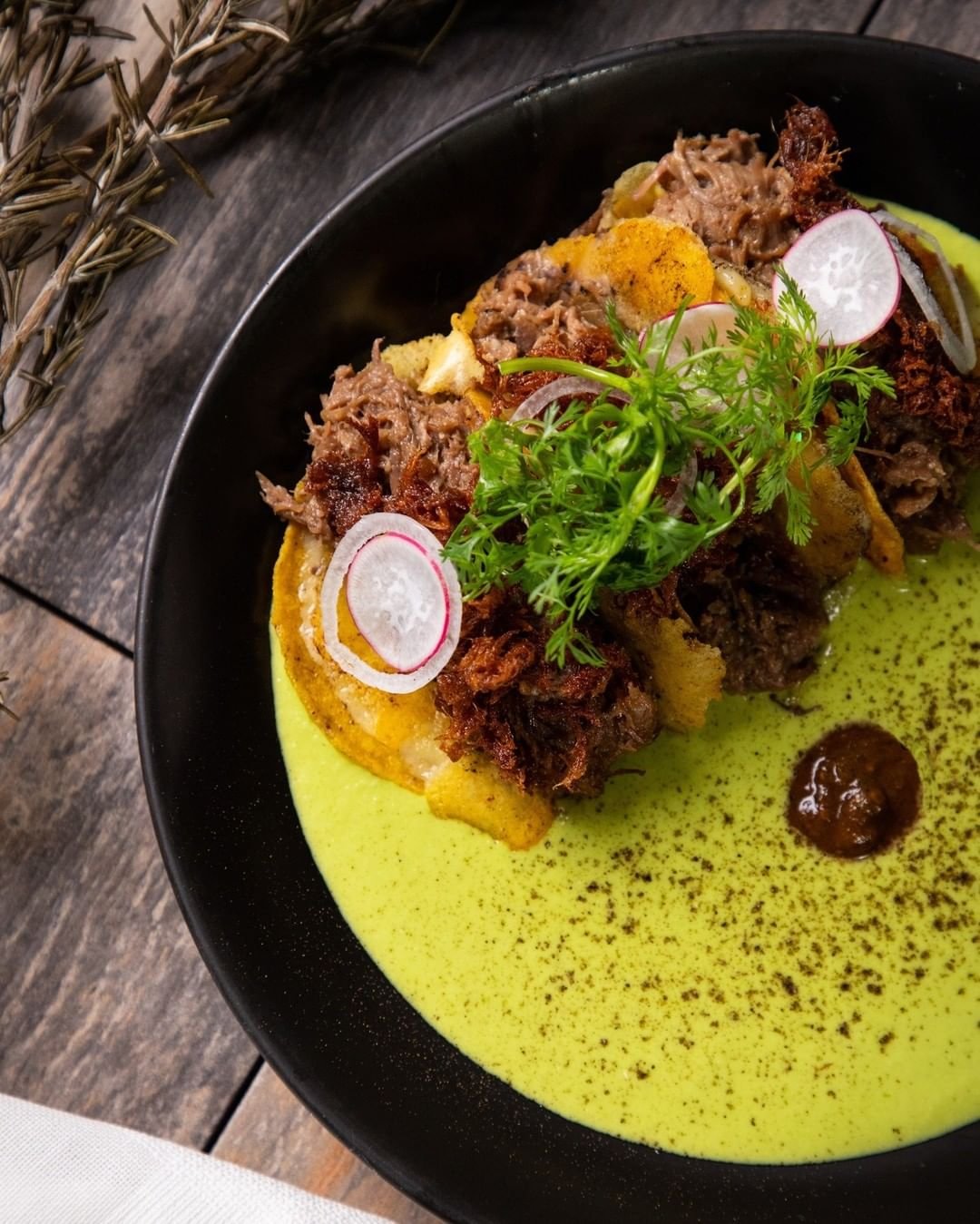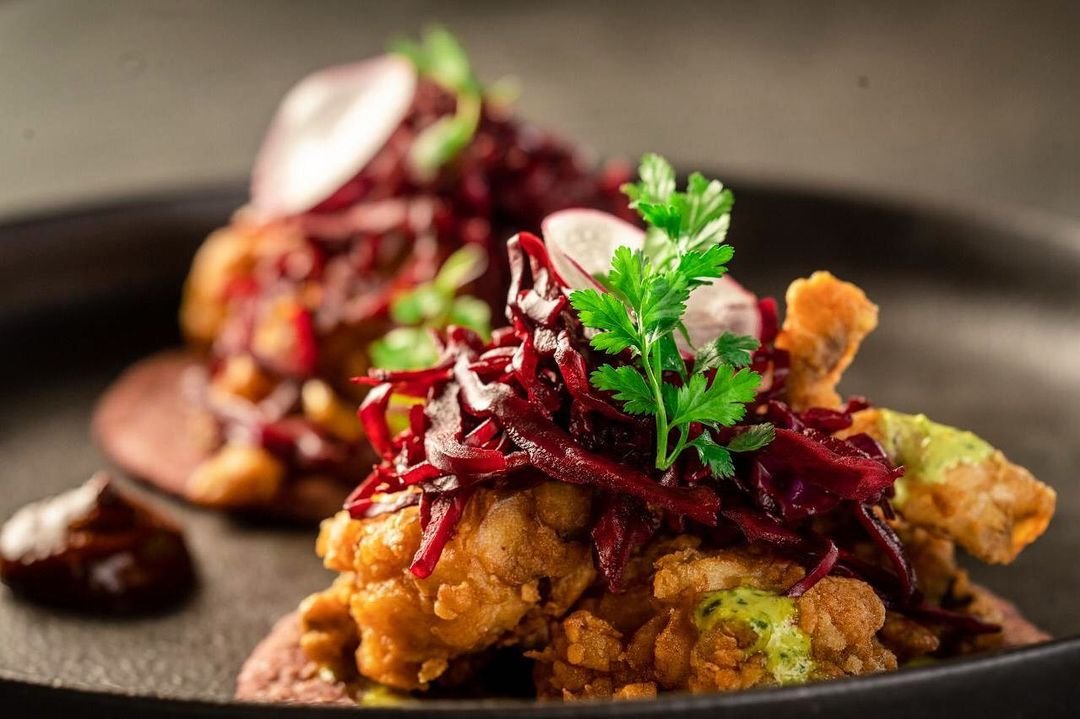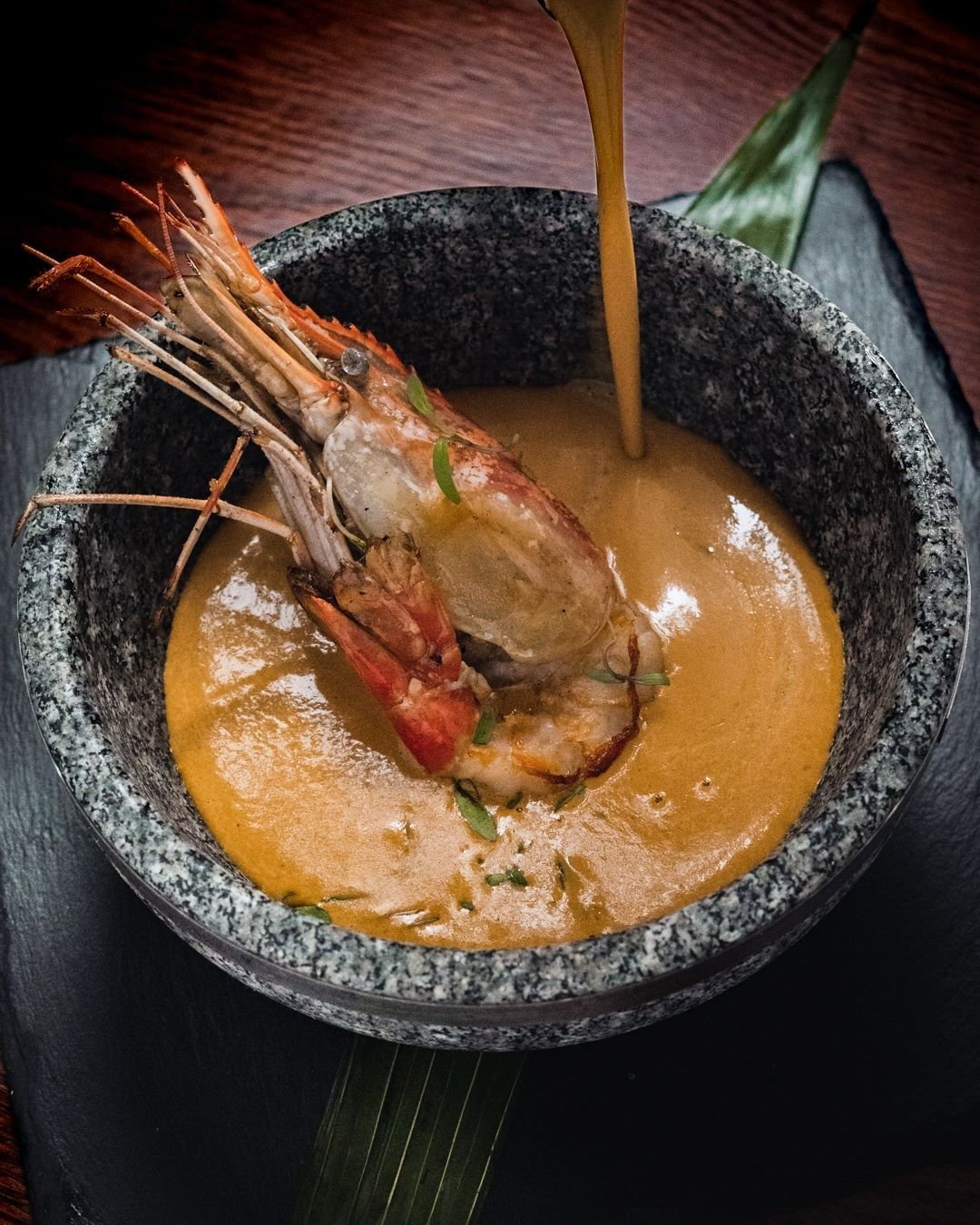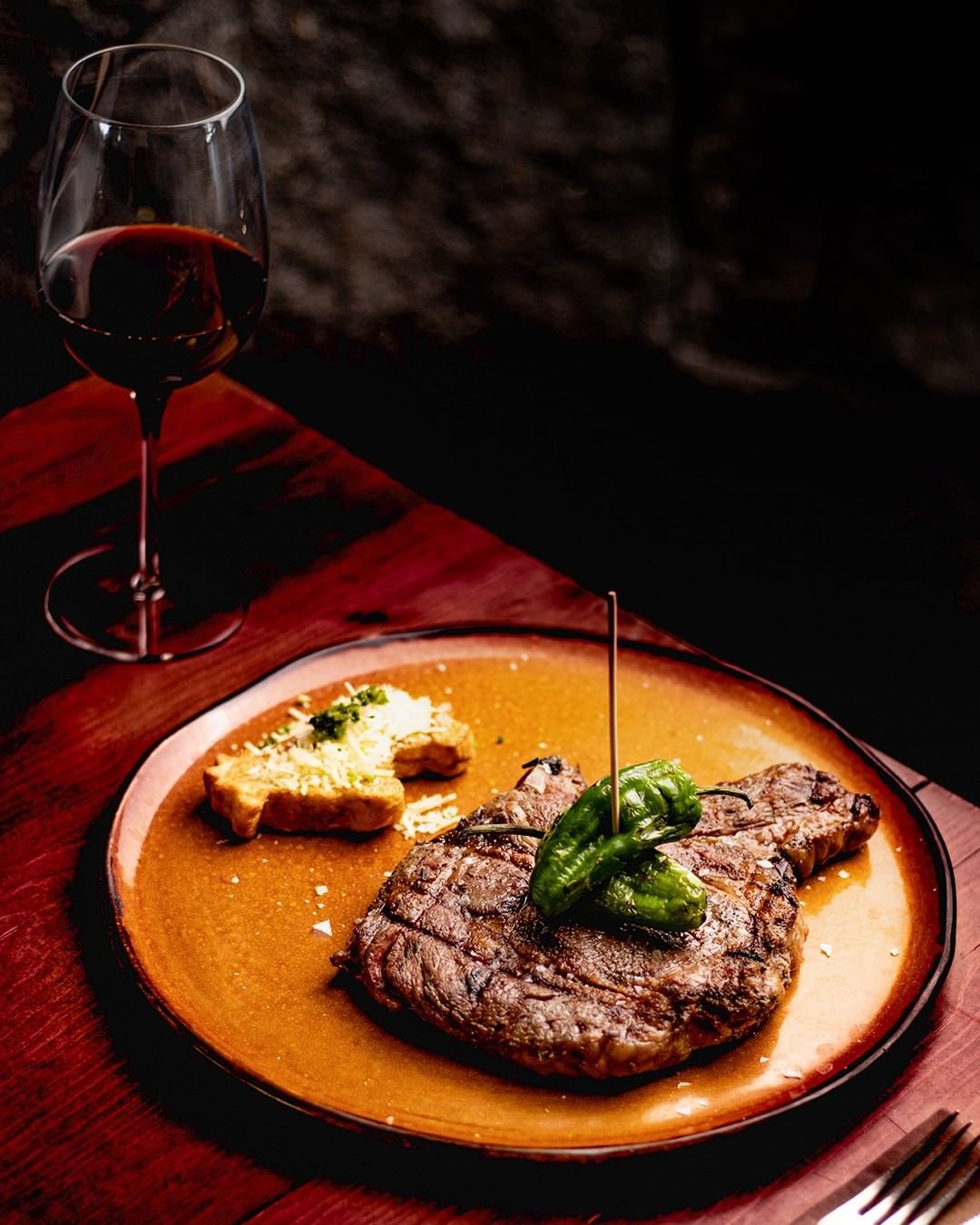From the azure waters of the Caribbean Coast to the sweeping jungles of Sian Ka'an, the Yucatan Peninsula has it all. Located on the far eastern tip of Mexico, the peninsula is an expansive swath of land, separating the Caribbean Sea to the east and the Gulf of Mexico to the west.
When exploring the Yucatan, you will find lush green forests dotted with Mayan ruins, colonial-era architecture, and sea life ablaze with colour.
It is also home to one of the seven wonders of the world. To the north of the Yucatan, you will find the Chichén Itzá, which was once the epicentre of the Mayan civilisation, and is one of the most famous archaeological sites, renowned for its architecture and beauty.
Discover why you simply cannot miss this wonder!
See the Wonder of Chichén Itzá.
As the country in Latin America with the largest amount of tourism, Mexico offers a variety of opportunities, whether that be indulging in one of its many unique resorts on the coast of the Pacific Ocean or the cosmopolitan splendour of Mexico City. Mexico is a country thriving with unique culture and history with plenty of exciting things to see and do, especially if you are passionate about history, architecture, and photography.
As one of the world's seven wonders, Chichén Itzá is a remarkable place, and somewhere everybody should aspire to visit at least once in their lives.
Chichén Itzá's Rich History.
There is a considerable amount of history surrounding the origins of the Chichén Itzá. Archaeologists are unsure when exactly construction began though historical records suggest that the city was in its early stages of development around 600-750 A.D.
The growth of Chichén Itzá spans several centuries, gradually growing in size and diversity, becoming one of the largest cities in the Mayan world. At its height, Chichén Itzá was home to Mayan people from all across the Yucatan Peninsula.
During the 13th century, the glory of the Chichén Itzá sadly declined, as historical records suggest that the Chichén Itzá was sacked at several points during this period. The city ultimately met a mysterious end during the 14th century, when the Maya people moved away from the city, never to return. Historians attribute this mass exodus to terrible weather conditions and a series of apocalyptic droughts. Anyone interested in history will find Chichén Itzá captivating, for centuries-worth of human history lie among the ruins.
The Mystery of the Mayan People.
Over many decades, the Mayan civilisation, has deeply captured our interests and imaginations. Generations of curious explorers have traversed through the deep jungles of Central America, discovering buried cities, remarkable pyramids, and astronomical and mathematical wonders.
The Mayans left behind intricate architecture, unique cuisines, and rare languages that have had a tremendous impact on the modern world. After years of research, archaeologists are still unable to tell us who these people were, where they came from, and how their great empire collapsed. However, the little that we do know about the Mayans is that they were an impressive, sophisticated society that played a significant role in shaping the world we live in today.
What Is There To See At Chichén Itzá?
El Castillo.
The historic site is home to one of the most stunning pyramids that the Mayans ever built, El Castillo, or ‘La Pirámide’ and the ‘Temple of Kukulcán’.
The pyramid consists of a series of square terraces with stairways up each of the four sides to the temple on top. All four sides of the pyramid have approximately 91 steps and when added together, including the temple platform on top as the final step, equals the number of days of the year in the Mayan calendar, which was most likely related to rituals.
Sculptures of plumed serpents run down the sides of the northern balustrade. On the days of the spring and autumn equinoxes, the late afternoon sun strikes off the northwest corner of the pyramid, casting a series of triangular shadows against the northwest balustrade, creating the illusion of the feathered serpent "crawling" down the pyramid. Those fortunate enough to have witnessed it have described it as a sight to behold.
Temple of warriors.
Also known as the Temple of the Thousand Columns, the Temple of Warriors is one of the most important of the pre-Hispanic civilisation. There is a debate about when precisely the pillars were constructed, but there is no debate among experts that columns were erected to support a giant vault that sadly no longer exist today.
Each pillar is engraved with the images of warriors, while the external walls are decorated with Mayan motifs. Militarism was the foundation of Mayan culture, as evidenced the monument known as the Platform of the Skulls, where they exhibited the skulls of their defeated enemies. While gruesome, the engravings make for wonderful photographs.
The Sacred Cenote & Cenote Ik Kil.
The Yucatan Peninsula is famous for its cenotes. A cenote is a natural pit or sinkhole resulting from the collapse of a limestone bedrock that exposes groundwater. They are scattered across the region, with two of the most famous located within walking distance of Chichén Itzá.
Three hundred metres from the El Castillo is the Sacred Cenote, also known as the Well of Sacrifice. The Mayan people deposited precious valuables into the cenote as a form of sacrifice to the rain god Chaac. In recent times, objects made of jade, gold, and copper have been retrieved from the bottom of the cenote and can now be found in museums across Mexico. With its emerald, green waters, the Sacred Cenote is remarkably picturesque, with many couples posing for photographs at the site.
There is also Cenote Ik Kil, located just outside Chichén Itzá. Archaeologists have found fossils of mammoths, massive jaguars, and sloths in the area's underground cave systems, as well as human bones indicating ritual sacrifice at the location. Today, Cenote Ik Kil is a popular tourist attraction that is open to the public to swim in.
Things to know before visiting.
The Chichén Itzá entrance fee is more expensive than other Mayan sites in Mexico as you have to pay for two tickets. One is for the federal government agency that co-administers the sites (INAH), and the other is for the Government state agency (CULTUR). The total Chichén Itzá ticket price for foreigners is $497 pesos (as of April 2021), about £17.95.
When you arrive at the Chichén Itzá ticket office, there are two separate windows next to each other, and you buy one ticket at each window. Keep both your tickets as they will each be stamped on the way in. You can't purchase daytime Chichén Itzá tickets in advance online; you can only buy them at the ticket office when you arrive. Bring cash with you to buy your ticket in case the card machine doesn’t work!
For professional photographers, film permits cost extra, and tripods are not allowed without a special license arranged with INAH in advance, which can be difficult to get.
Chichén Itzá is open every day from 8 am to 5 pm, with last entry at 4 pm. As Chichén Itzá is such a popular place to visit in Mexico, we highly recommend you get there as early in the day as possible to avoid waiting in the queue when the ticket booths open.
There are souvenir stalls along the footpaths. Souvenir sellers are allowed in from 8 am, along with the visitors, so you will be able to buy gifts and souvenirs for your loved ones.
What to take to Chichén Itzá?
There isn't much shade around the main temples in Chichén Itzá, and the sun beats down mercilessly, making it very hot. Bring plenty of water with you, sunscreen, and a hat or umbrella to protect yourself from the sun. Be sure to wear comfortable shoes too, as you'll want to walk around and explore everywhere – flip flops aren't ideal.
There is a shop at the entrance where you can buy drinks and snacks, but once you are inside there is nowhere to buy refreshments during your visit, so a packed lunch might be a sensible idea.
If you decide not to take a Chichén Itzá tour, a guidebook is helpful to explain more about the ruins, as there is very little signage to explain what is what.
You can take small backpacks and handbags into Chichén Itzá, but there is a luggage storage facility if you prefer not to carry your bags. Once you have paid for your entrance tickets, look out for signs to the luggage storage.
WHAT ELSE TO DO IN THE YUCATÁN
Chichén Itzá is a marvellous wonder, but the Yucatán Peninsula is a large region with many other exciting things to see and do.
Perhaps, you would like to visit Cancun, a destination that exudes relaxation and pleasure-seeking. The city seems to jump from the page of travel brochures in a flurry of paradisal sands and glistening crystal waters.
Or perhaps you would like to visit the awe-inspiring pink lakes of Las Coloradas. Home to animals like flamingos, crocodiles, sea turtles, jaguars, and various sea birds, Las Coloradas is remarkably picturesque. You are sure to get some beautiful photographs to show your family.
If you are a food-lover, you should visit Valladolid. Not to be confused with its Spanish counterpart, this sleepy colonial town is built on top of an ancient Mayan settlement. The central plaza is full of classic Spanish-looking buildings and many wonderfully tasty traditional Maya restaurants and food stalls.
WHERE TO STAY | Best Hotels
As the Yucatan has grown in popularity, so has its broad selection of hotels. Here are some of the best.
Haven Riviera Cancun
Haven Riveria Cancun is an exclusive adults-only, all-suite, all-inclusive beachfront resort. With its personalised mini-bars, aromatherapy, swim-out rooms, around the clock concierge and room service, five restaurants, 9 bars, and a full-service spa, you won't want to leave the hotel. But with Cancun on your doorstep and Chichén Itzá not too far away, you really should.
Palafitos Overwater Bungalows
It is one thing to stay near the sea. It is another to sleep above it.
Palafitos Overwater Bungalows surround you with the sapphire serenity of the Caribbean. Gently lapping waves beckon you for a swim in the morning and lull you to sleep at night.
Hotel Mayaland Hotel & Bungalows
For those of you who want to get up close and personal with Chichén Itzá temples, this is the hotel for you. Built in 1923, this historic hotel has been named one of the world’s top hotels by National Geographic and offers a private entrance to Chichen Itza’s famous temples.
The Mayaland features spacious air-conditioned rooms, bungalows, and suites, all with satellite TV and bathrooms with complimentary toiletries. Some of the rooms even have views of the Mayan observatory and temples. To top it off, exotic wildlife can be found right outside the doors of the Mayaland Hotel & Bungalows.
WHAT TO EAT | Best Restaurants
Here are the three best restaurants in the Yucatan:
Porfirio's Restaurante - Playa del Carmen.
Porfirio's is a restaurant that cherishes its Mexican heritage, transforming its traditional flavours, textures, and aromas into the most exquisite dishes of Mexican haute cuisine. Perhaps you would enjoy crunchy pork belly with creamy avocado, coated in a lemon chilli sauce, or maybe you would like to try crispy baby squid with red habanero chilli sauce and guajillo chilli mayonnaise. Whatever you choose, you will not be disappointed.
Picheta – Merida.
There are plenty of luxurious restaurants across the Yucatan, but Picheta is among the best in Merida. Surrounded by history and with a unique view throughout the city, you will be able to enjoy a range of delicious foods. Ravioli with ricotta cheese and longaniza de Valladolid in a sauce with xcatic chilli, black risotto whit octopus made with red wine and squid ink, and salmon with sour orange reduction and grilled local pumpkin and beetroot are all just some of the delicious options available.
Rosa Negra – Cancun.
At Rosa Negra, every night is a party of light, music, and colour. Located at the edge of a pier, with large boats and yachts in the background, a shower of fireworks lights up the sky, while a fantastic percussion show with water, light, and fire invites attendees to dance and enjoy an endless party. That is before we even get to the food. Whether you choose the jumbo Alaskan king crab cluster, Peruvian rice with seafood, or the chorizo steak, you will have a party in your mouth.
REACH THE YUCATAN BY PRIVATE JET FLIGHTS
The luxury private and business air charter company, Astute Aviation, specialises in luxury private and business air charter travel from Manchester and Liverpool to the various airports across Mexico. At Astute Aviation, we provide our private jet customers access to a unique variety of aircraft available for charter, as well as remarkably low jet charter prices.
Our fleet provides a variety of amenities, technology, and passenger seating choices. Whether you are looking for a small or big group, we can assist you in making the appropriate selection when selecting an aircraft at competitive prices with no hidden extras.
Airports in the Yucatan for Private Charter Flights.
There are several airports across the Yucatan which you can fly to, the most popular of which are:
Cancun International Airport [CUN]
Merida – Licenciado Manuel Crecencio Rejon Int´l Airport [MID]
Aeropuerto Nacional de Playa del Carmen (PCM)
Cozumel Airport [CZM]
GET A QUICK YUCATAN AIR CHARTER QUOTE
Astute Aviation is committed to providing you with the best air charter alternatives available, as well as an amazing individualised customer care experience. Get a fast quote from Astute Aviation to charter a private jet to the Yucatan and see the wonder that is Chichén Itzá for yourself.
Call us for more information on our jet charter flights from Manchester or Liverpool to the Yucatan Peninsula.
